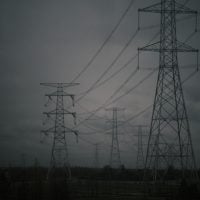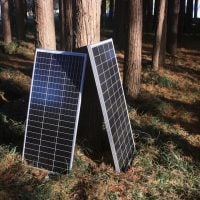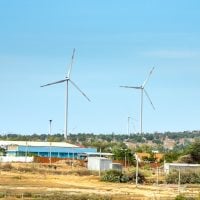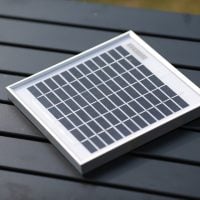Navigating the grant landscape for renewable energy can be a daunting task, especially for NGOs that may not have extensive experience in this sector. The first step in this journey is to familiarize yourself with the various funding sources available. These can range from government grants, private foundations, and international organizations to corporate sponsorships and crowdfunding platforms.
Each of these sources has its own set of priorities, eligibility criteria, and application processes. Understanding these nuances is crucial for positioning your project effectively. Moreover, the renewable energy sector is rapidly evolving, with new technologies and policies emerging regularly.
Keeping abreast of these changes can provide insights into potential funding opportunities. For instance, many governments are increasingly prioritizing climate change initiatives, which can lead to new grant programs aimed at promoting renewable energy projects. By staying informed about trends and shifts in the funding landscape, NGOs can better align their proposals with the priorities of potential donors. Are You Working on Solar Innovation or Clean Energy Access? Join us to receive updates.
Key Takeaways
- Understanding the grant landscape is crucial for securing funding for renewable energy projects.
- Identifying the right donor for your project can significantly increase your chances of success.
- Crafting a compelling proposal is essential for capturing the donor’s attention and support.
- Leveraging your network for support can help in building relationships and gaining additional resources.
- Demonstrating impact and sustainability is key for showcasing the effectiveness of your renewable energy project.
Identifying the Right Donor for Your Project
Once you have a grasp of the grant landscape, the next step is to identify the right donor for your project. This involves conducting thorough research to find organizations whose missions align with your goals. For example, if your project focuses on solar energy in rural communities, look for donors that prioritize sustainable development, poverty alleviation, or renewable energy access.
Tools like grant databases and donor directories can be invaluable in this process. In addition to aligning missions, consider the donor’s funding history and preferences. Some donors may have a track record of supporting specific types of projects or geographic areas.
Analyzing past grants awarded can provide insights into what types of initiatives resonate with them. Furthermore, understanding their application process and timeline can help you tailor your approach and ensure that your proposal meets their expectations.
Crafting a Compelling Proposal
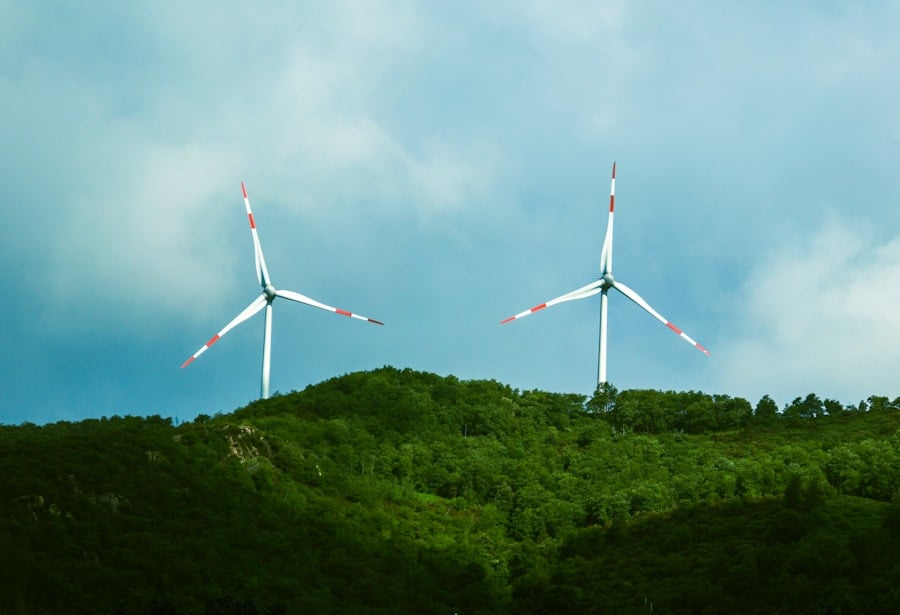
A well-crafted proposal is essential for securing funding in the competitive landscape of renewable energy grants. Start by clearly articulating the problem your project aims to address and why it matters. Use data and real-world examples to illustrate the urgency of the issue.
For instance, if you are proposing a wind energy project, include statistics on local energy consumption and how your initiative could reduce reliance on fossil fuels. Next, outline your project’s objectives and the specific activities you plan to undertake. Be sure to include measurable outcomes that demonstrate the potential impact of your work.
Donors want to see that their investment will lead to tangible results, so providing a clear roadmap for success is crucial. Additionally, consider incorporating testimonials or case studies from similar projects to bolster your credibility and showcase your organization’s expertise.
Leveraging Your Network for Support
Building a strong network is vital for NGOs seeking funding for renewable energy projects. Your existing connections can provide valuable insights, introductions to potential donors, and even collaborative opportunities. Attend industry conferences, workshops, and networking events to expand your circle and engage with like-minded professionals.
These interactions can lead to partnerships that enhance your project’s visibility and credibility. Moreover, don’t hesitate to reach out to individuals within your network for feedback on your proposal or project ideas. Engaging with experts in renewable energy can provide fresh perspectives and help you refine your approach.
Additionally, consider leveraging social media platforms to connect with influencers and organizations in the renewable energy space. By actively participating in discussions and sharing relevant content, you can position yourself as a thought leader and attract potential supporters.
Demonstrating Impact and Sustainability
Donors are increasingly focused on the long-term impact and sustainability of the projects they fund. When crafting your proposal, emphasize how your initiative will create lasting change in the community or region it serves. This could involve outlining plans for ongoing maintenance of renewable energy systems or strategies for community engagement that ensure local buy-in and support.
In addition to demonstrating immediate benefits, consider how your project aligns with broader sustainability goals. For example, if your initiative promotes solar energy adoption, highlight how it contributes to reducing greenhouse gas emissions or improving energy security. Providing a clear vision of how your project fits into larger environmental and social frameworks can make it more appealing to potential donors.
Highlighting Innovation and Technology

The renewable energy sector is characterized by rapid technological advancements and innovative solutions. When presenting your project, be sure to highlight any unique approaches or technologies you plan to utilize. This could involve showcasing cutting-edge solar panel designs, energy storage solutions, or community-based energy management systems.
Incorporating innovation into your proposal not only demonstrates your organization’s forward-thinking approach but also positions you as a leader in the field. Donors are often drawn to projects that push boundaries and explore new possibilities within renewable energy. By emphasizing how your initiative leverages technology to address challenges, you can capture the attention of potential funders who are eager to support groundbreaking work.
Engaging with the Donor and Building Relationships
Establishing a strong relationship with potential donors is crucial for securing funding and ensuring ongoing support for your project. Start by engaging with them early in the process—before submitting your proposal. Reach out to introduce yourself and your organization, share information about your project, and express interest in their funding priorities.
Once you’ve submitted your proposal, maintain open lines of communication with the donor. Regular updates on your project’s progress can help build trust and demonstrate accountability. Additionally, consider inviting donors to visit your project site or participate in events related to your initiative.
These interactions can deepen their connection to your work and foster a sense of partnership that goes beyond financial support.
Addressing Potential Challenges and Risks
Every project comes with its own set of challenges and risks, and being transparent about these factors is essential when seeking funding. In your proposal, identify potential obstacles that could impact your project’s success—whether they are financial constraints, regulatory hurdles, or community resistance—and outline strategies for mitigating these risks. By proactively addressing challenges, you demonstrate foresight and preparedness to potential donors.
This not only builds confidence in your ability to manage the project effectively but also shows that you have considered various scenarios and are committed to finding solutions. Additionally, sharing lessons learned from past experiences can further enhance your credibility and reassure donors that you are equipped to navigate complexities.
Developing a Clear Budget and Financial Plan
A well-structured budget is a critical component of any grant proposal. It should clearly outline all anticipated expenses related to your project, including personnel costs, equipment purchases, operational expenses, and any other relevant expenditures. Be sure to justify each line item by explaining how it contributes to achieving project objectives.
In addition to detailing expenses, consider including a financial plan that outlines how you will sustain the project beyond the grant period. This could involve exploring additional funding sources, developing revenue-generating activities, or establishing partnerships that provide ongoing support. Demonstrating a clear financial strategy not only reassures donors about the viability of your project but also highlights your organization’s commitment to long-term success.
Showcasing Your Team and Expertise
The strength of your team can significantly influence a donor’s decision-making process. Highlighting the expertise and experience of key team members in your proposal can instill confidence in potential funders regarding your organization’s capacity to execute the project successfully. Include brief bios that showcase relevant qualifications, past achievements, and specific roles within the project.
Additionally, consider emphasizing any partnerships or collaborations with other organizations or experts in the field of renewable energy. This not only broadens the scope of expertise available for your project but also signals to donors that you are committed to leveraging resources effectively for maximum impact.
Following Up and Staying Engaged
After submitting your proposal, it’s essential to follow up with potential donors in a timely manner. A polite inquiry about the status of your application demonstrates professionalism and genuine interest in their feedback. Regardless of whether you receive funding or not, maintaining communication can open doors for future opportunities.
Staying engaged with donors even after a decision has been made is equally important. Share updates on your project’s progress, successes, and challenges—this transparency fosters trust and keeps them invested in your work. Building long-term relationships with donors can lead to ongoing support for future initiatives and create a network of advocates who champion your mission within their circles.
In conclusion, securing funding for renewable energy projects requires a strategic approach that encompasses understanding the grant landscape, identifying suitable donors, crafting compelling proposals, leveraging networks, demonstrating impact, highlighting innovation, building relationships, addressing challenges, developing budgets, showcasing expertise, and maintaining engagement post-application. By following these actionable tips and learning from real-world examples within the NGO sector, organizations can enhance their chances of success in obtaining grants that drive meaningful change in renewable energy initiatives.



